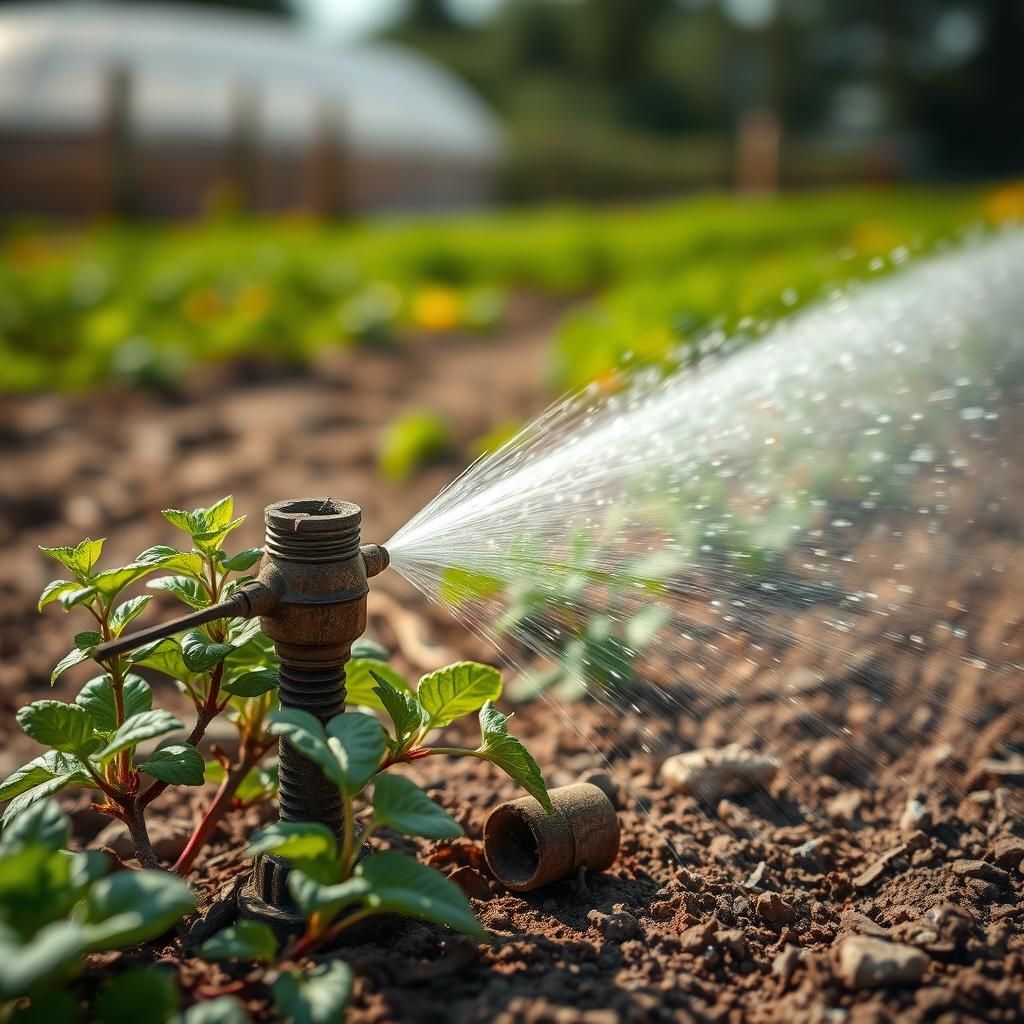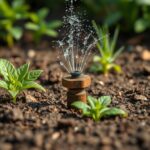What are the advantages and disadvantages of irrigation? A Comprehensive Guide for Farmers and Gardeners

Irrigation plays a crucial role in modern agriculture, making it possible to cultivate crops in various climates and terrains. This comprehensive guide explores the advantages and disadvantages of irrigation, providing valuable insights for farmers and gardeners alike. While effective water management can lead to increased crop yields and improved soil health, it also presents challenges such as water scarcity and potential environmental impacts. Understanding these factors is essential for making informed decisions about irrigation practices. In the following sections, we will delve deeper into the benefits and drawbacks of irrigation systems, helping you navigate this critical aspect of agricultural success.
Exploring the Advantages and Disadvantages of Irrigation
The practice of irrigation offers several significant advantages and disadvantages that can impact agricultural productivity, water management, and environmental balance. On the one hand, irrigation enables farmers to cultivate crops in areas with insufficient rainfall, thereby increasing crop yields and ensuring a reliable food supply. Additionally, it allows for the cultivation of high-value cash crops, contributing to local economies. However, on the other hand, improper irrigation can lead to water wastage, soil salinization, and reduced water quality, posing threats to long-term agricultural sustainability and biodiversity. The challenge lies in optimizing irrigation practices to harness its benefits while mitigating negative impacts.
Advantages of Irrigation
One of the primary advantages of irrigation is the ability to enhance crop production in regions where rainfall is insufficient or inconsistent. By providing a controlled water supply, irrigation enables the growth of a diverse range of crops, including those that may not survive under natural precipitation conditions. This increased productivity can lead to food security, as farmers can produce more crops to meet the needs of growing populations. Furthermore, irrigation supports the growth of high-value crops, thereby boosting farmers' incomes and contributing to economic development in agricultural regions.
Disadvantages of Irrigation
Despite its benefits, irrigation comes with several disadvantages that can have adverse effects on the environment and agricultural practices. Poorly managed irrigation systems can lead to waterlogging and soil salinization, where the accumulation of salts in the soil adversely affects crop growth. Additionally, the over-extraction of water from rivers and aquifers can result in depletion of these vital water sources, leading to ecological imbalances. Consequently, communities reliant on these water sources may face water scarcity, affecting both agriculture and drinking water availability.
Impact on Water Resources
Irrigation significantly impacts water resources by altering the natural flow and availability of water in ecosystems. The diversion of water for irrigation can lead to reduced river flows, affecting fish populations and other aquatic habitats. Furthermore, excessive reliance on irrigation can strain local water supplies, particularly in arid regions, where water is already scarce. This pressure on water resources necessitates careful management and planning to ensure that the needs of both agricultural and non-agricultural users are balanced sustainably.
See also:
Soil Quality and Fertility
Irrigation can influence soil quality and fertility, which are crucial for sustainable farming. While regular watering enhances crop growth, it can also result in negative outcomes like soil salinity if drainage systems are inadequate or if salts are not leached from the soil effectively. Additionally, continuous irrigation may lead to the decline of soil organic matter, diminishing its fertility over time. Adopting practices such as crop rotation and the use of organic amendments can help mitigate negative impacts and maintain soil health in irrigated areas.
Economic Benefits and Costs
Irrigation has notable economic benefits, including the potential for increased agricultural profits and job creation within the farming sector. It allows farmers to grow higher-value crops, thereby improving their livelihoods and local economies. However, the costs of establishing and maintaining irrigation systems can be substantial, requiring significant investment in infrastructure and technology. Farmers must also consider ongoing operational costs, such as energy for pumping water and maintenance of irrigation channels. Balancing these costs with the potential economic gains is essential for the sustainability of irrigation projects.
| Aspect | Advantages | Disadvantages |
|---|---|---|
| Crop Yield | Increased production and diversity | Risk of soil salinization |
| Water Management | Enhanced water control | Potential for water depletion |
| Economic Impact | Boosts incomes and local economy | High infrastructure costs |
| Environmental Effects | Can improve land usability | May damage aquatic ecosystems |
| Soil Health | Supports sustained agriculture | Can decrease organic matter over time |
Understanding the Impact of Irrigation on Crop Yield and Soil Health
Irrigation plays a crucial role in agriculture, enhancing crop yields and enabling farmers to cultivate land that might otherwise be unproductive. By providing a consistent source of water, irrigation helps mitigate the effects of drought and can significantly increase the reliability of food production. However, over-reliance on irrigation can lead to soil degradation, such as salinization, where salt accumulation affects crop health. Thus, while irrigation improves efficiency and productivity, it necessitates careful management to preserve soil health and ecological balance.
Benefits of Irrigation on Crop Production
One of the primary benefits of irrigation is its ability to enhance crop production by supplying necessary moisture at critical growth stages. With controlled watering, farmers can optimize plant health and boost yields, resulting in higher quantities of harvestable crops. This reliability ensures that farmers can produce food even during periods of low rainfall, leading to more stable markets and food security.
Challenges of Water Scarcity in Irrigation
Water scarcity poses a significant challenge for irrigation practices, especially in regions where water resources are limited. Overuse of available water can lead to diminished supplies, increased competition among agricultural users, and potential conflicts over water rights. Farmers must balance their irrigation needs with sustainable practices to avoid exacerbating water scarcity, which may threaten the viability of their operations in the long term.
See also:
Impact of Irrigation on Soil Fertility
Irrigation can have both positive and negative impacts on soil fertility. On one hand, it can support nutrient cycling by promoting microbial activity and improving organic matter decomposition. On the other hand, excessive irrigation can lead to waterlogging and nutrient leaching, which may reduce the overall fertility of the soil over time. Thus, understanding the right balance of irrigation is vital for maintaining soil health.
Economic Considerations of Irrigation Systems
Investing in irrigation systems can be costly, with expenses related to infrastructure, maintenance, and energy usage. However, the economic benefits often outweigh these costs by providing more consistent yields and reducing the risks associated with drought. Farmers must evaluate the initial investment against potential profits, while also considering government incentives or grants that may be available for installing efficient irrigation systems.
Environmental Impacts of Irrigation Practices
Irrigation practices can significantly impact the environment, contributing to both positive and negative outcomes. While irrigation can help maintain agricultural productivity, it may also lead to ecosystem disruption, habitat destruction, and altered water tables. Careful planning and sustainable practices are essential to mitigate adverse effects on local ecosystems and maintain biodiversity while ensuring agriculture thrives.
Questions from Our Readers
What are the advantages of irrigation?
Irrigation provides numerous benefits, including increased agricultural productivity, water management during dry periods, and the ability to grow crops in regions with insufficient rainfall. It allows farmers to maintain consistent crop growth, resulting in higher yields and more reliable food supplies.
What are the disadvantages of irrigation?
One of the main disadvantages of irrigation is the potential for water wastage and overuse, leading to a depletion of local water resources. Additionally, poor irrigation practices can cause soil problems, such as salinization and soil erosion, which can negatively impact long-term agricultural sustainability.
See also:
How does irrigation affect the environment?
Irrigation can have significant environmental impacts, including alteration of natural waterflow patterns, reduced biodiversity in aquatic ecosystems, and the potential for chemical runoff from agricultural fields. These changes can disrupt local ecosystems and lead to water quality issues.
Can irrigation be sustainable?
Yes, irrigation can be made sustainable through the implementation of efficient techniques such as drip irrigation, rainwater harvesting, and proper water management practices. By optimizing water use and minimizing environmental impact, it is possible to achieve sustainable irrigation that supports agriculture while conserving vital water resources.

If you want to read more articles like What are the advantages and disadvantages of irrigation? A Comprehensive Guide for Farmers and Gardeners, we recommend you check out our Irrigation category.
Leave a Reply
Related Articles